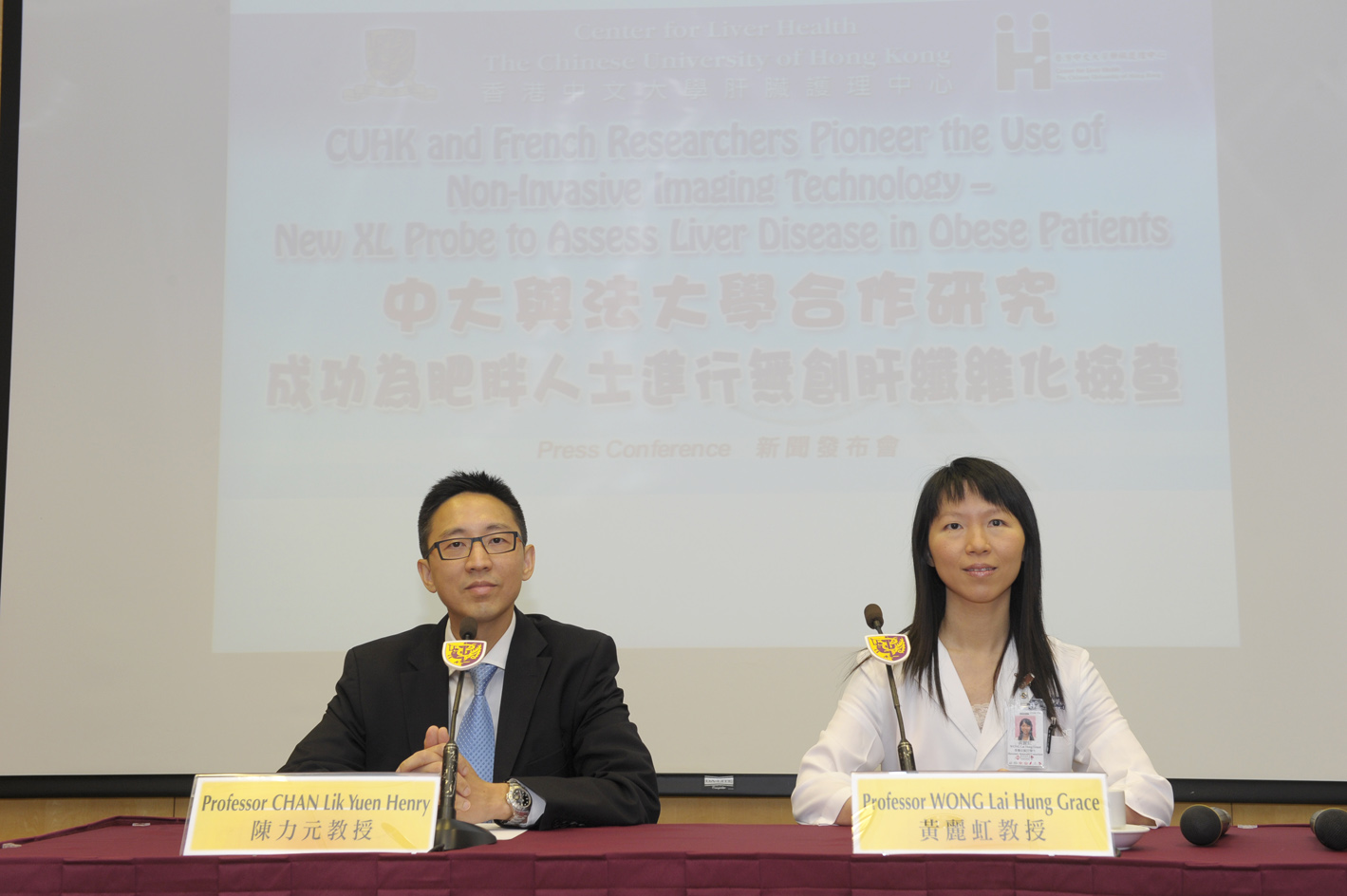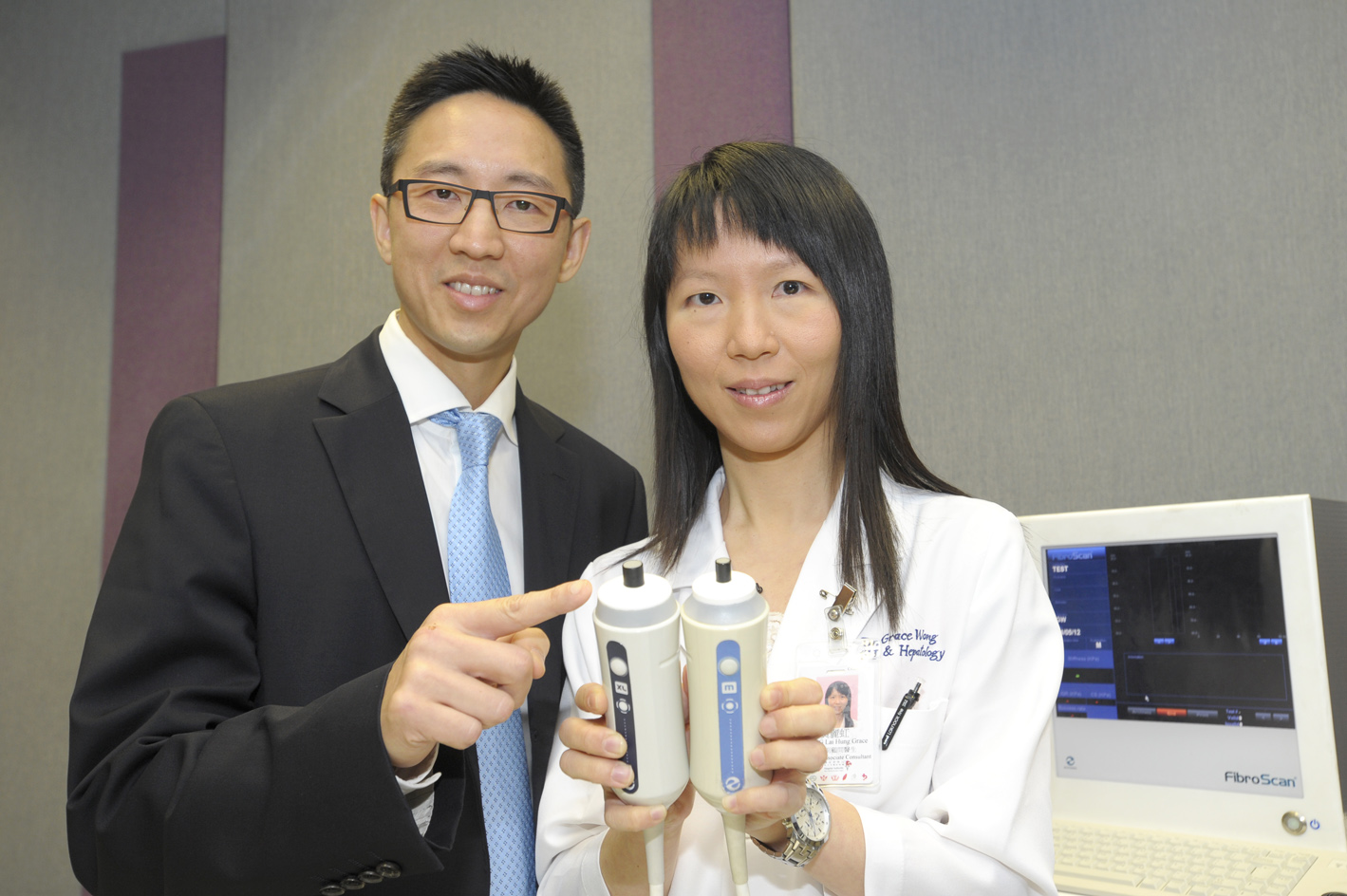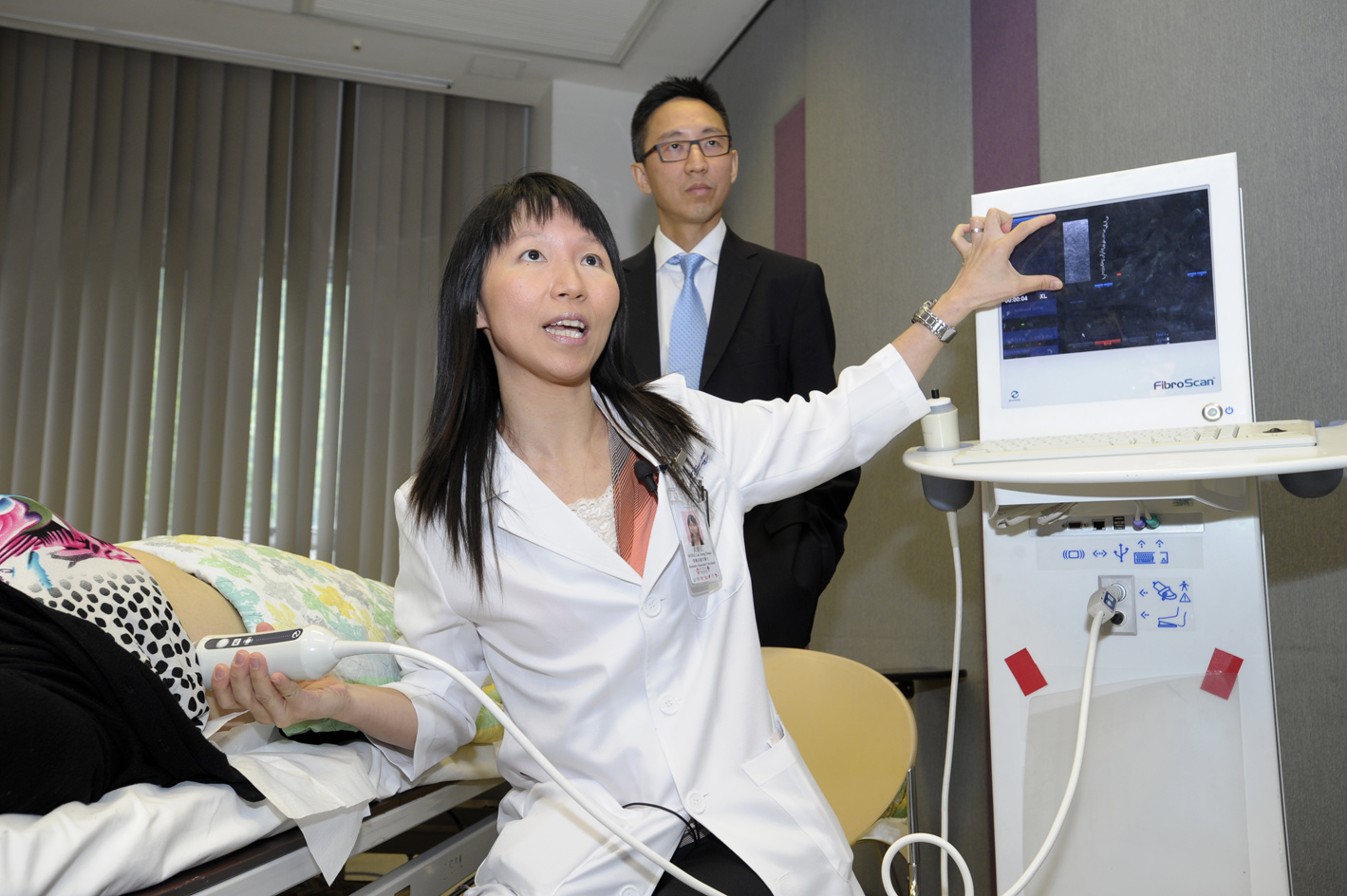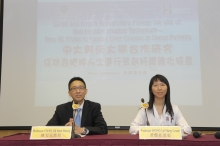CUHK
News Centre
CUHK and French Researchers Pioneer the Use of Non-Invasive Imaging Technology – New XL Probe to Assess Liver Disease in Obese Patients
About 500 million adults are obese in the world. Obesity is closely associated with liver diseases and has become an increasingly serious problem largely due to the westernization of lifestyle. It is very important to assess the liver condition of obese people because up to 80% of them may have fatty liver, which may lead to cirrhosis and liver cancer. The Chinese University of Hong Kong (CUHK) and University of Bordeaux in France has recently conducted a collaborative research to pioneer the use of the new XL Probe to assess liver fibrosis among obese subjects with a deeper penetrance of measurement, and which can also enhance the performance of Fibroscan.
Liver fibrosis will first develop in a patient with liver disease before it progresses to the stage of cirrhosis. With proper treatment, liver fibrosis can be reversible. By assessing the severity of liver fibrosis, medical professionals can predict the prognosis of patients and give early treatment to those with severe condition to reduce the risk of cirrhotic complications and liver cancer.
Liver biopsy is a traditional standard test to assess liver fibrosis, however, patients are often not willing to take this test as it is an invasive procedure. Over the last few years, liver stiffness measurement by Fibroscan, an accurate, reproducible and non-invasive test using ultrasound Doppler technique, has been developed to detect liver fibrosis and cirrhosis. This new test is commonly used in Hong Kong and has largely replaced liver biopsy as the primary assessment in patients with liver diseases. Fibroscan fails to give reliable results in about 30% of obese patients due to their thick subcutaneous fat layer. In view of this, a new XL probe was developed for liver stiffness measurement in obese patients. With a bigger probe that generates a low frequency ultrasound with larger vibration amplitude and deeper measurements below the skin surface, the new XL probe technology allows ultrasound wave penetrating into deeper liver tissue, giving a more accurate imaging.
From 2009 to 2011, CUHK and University of Bordeaux in France conducted a research on liver stiffness measurements on 286 patients by both the new XL probe and the original M probe. Valid measurements were obtained in 98% of patients using the XL probe, compared to 92% when the M probe was in use. Among obese patients with body mass index above 30 kg/m2, 94% valid measurements were obtained by the XL probe and 74% by the M probe. Among patients who failed to get M probe measurements, 57% of them could get reliable measurements by the XL probe.
In conclusion, it is important to assess liver fibrosis in obese people. CUHK recommends the use of the new XL probe for liver stiffness measurements so that patients can enjoy a safer and more accurate assessment of liver condition.
Prof. Chan Lik Yuen Henry, Professor, Department of Medicine and Therapeutics and Director of Center for Liver Health (left) and Prof. Wong Lai Hung Grace, Associate Professor, Department of Medicine and Therapeutics, CUHK
Prof. Chan Lik Yuen Henry and Prof. Wong Lai Hung Grace show the new XL probe (left) and the regular M probe (right) of Fibroscan









